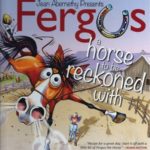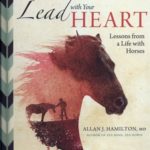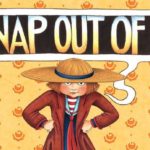Snowman’s story seems whimsically bred; out of Hollywood, by a fairy tale. But this is history, not something conceived on a movie back lot or derived from a writer’s over-active imagination.
In the late 1950s and early ?60s, the flea-bitten gray gelding became an equine rags-to-riches hero. He emerged as a show-jumping sensation when he starred in Madison Square Garden at the National Horse Show in New York City, triumphing over regally bred mounts bought for hundreds of times his meager purchase price.
While his legend had gotten a bit dusty in recent years, it’s now been polished and introduced to a new generation with this summer’s publication of Elizabeth Letts’ fascinating book, “The Eighty-Dollar Champion: Snowman, the Horse That Inspired a Nation.”
A Life-Changing Decision
The “once-upon-a-time” part of the narrative took place well over a half-century ago in Pennsylvania Dutch country, when immigrant Harry de Leyer spent $80 for a plow horse who had just been loaded onto a truck bound for the slaughterhouse. De Leyer had been late to the auction, and the horses on the truck were all that was left.
All too familiar himself with suffering (having experienced World War II in his native Netherlands), de Leyer felt a special affinity for the soulful animal, got him off the truck and took him home to New York’s Long Island.
The horse had never been ridden, but he was amenable. Once his new owner got him used to going under saddle, Snowman became a lesson horse at the private Knox School, where de Leyer taught riding. Snowman was quiet but apparently not much for jumping, stumbling over cavaletti and crossrails. Then, de Leyer tried him over a 4-foot fence just for the heck of it, and he cleared it easily. Snowman simply needed a challenge.
When school was out for the summer, de Leyer had to sell some of the horses, and the reliable Snowman was sent down the road to the farm of a doctor. But Snowman kept returning to de Leyer’s barn, jumping many imposing fences along the way. Who could fight that homing instinct?
Snowman finally was back to stay, and de Leyer started showing him at some of the most prestigious competitions of the day, from New York’s Sands Points to Piping Rock. He was a sensation, winning one class after another for “the little guy,” as the wealthy and socially elite could only watch and wonder at “The Flying Dutchman” and his soaring mount.
Equine Media Star
In 1958, Snowman took the show-ring triple crown of that era–the National Open jumper Championship, the Professional Horseman’s Association championship (at that time a great honor) and the National Horse Show championship. He clinched the latter only hours after walking along the sidewalks of Manhattan to appear on TV’s Tonight Show, where Johnny Carson clambered onto him and sat backwards facing his tail. Snowman was unfazed, as usual.
Not only was he suddenly a TV star, but the newspapers also went crazy over Snowman’s exploits. The amazing gelding was a media darling in the days before the Internet, Twitter and Facebook.
Although he certainly could have used the money, de Leyer turned down an offer of $35,000 and then a blank check for Snowman. How could he sell a member of the family?
The following year, Snowman took the triple crown again, further cementing his place not only in history, but also in the hearts of the millions who had eagerly followed his career.
De Leyer’s relationship with Snowman obviously was destiny, and the karma resurfaced decades later, while Letts was sitting at her computer and spotted a photo of one horse jumping over another horse. The jumper was Snowman, doing a stunt for the camera. “It caught my eye, and I was curious about why this horse was jumping over another horse,” she said.
Letts thought it sounded familiar, and she realized that years before she may have seen a children’s book about Snowman. (She found the book again online but decided against buying it when she learned it was going for $400 as a collector’s item.) But her curiosity led her to research, and then to writing.
The Story Continues
Letts, a California native who competed in eventing before she got married and raised a family, sent de Leyer a letter after determining he was the rider in that astonishing photo. He answered the note with a phone call, and after a visit to his Virginia farm, she realized he was “a great storyteller who had very, very vivid memories.”
So began a collaboration on a fascinating volume that puts Snowman’s saga in context with the times of his life and de Leyer’s pre- and post-World War II existence in the Netherlands and the United States. The book also captures the mood of the United States after the war and during the Cold War.
Research at the National Sporting Library in Middleburg, Virginia, helped augment the volume, which re-introduces so many famous equestrian names of the past: Dave Kelley, Mickey Walsh, Adolph Mogavero, Capt. Vladimir Littauer and the U.S. Equestrian Team, featuring Frank Chapot and William Steinkraus. All were players with de Leyer in the show-jumping drama where Snowman produced such a magnificent performance.
Snowman finished showing in 1962. He was getting older, and de Leyer couldn’t abide looking into the stands and seeing the horse’s young fans crying if he didn’t win. De Leyer told Letts he never felt that Snowman just belonged to him, because his children were so attached to him, including the girls at the school. So he always considered that he was sharing the animal christened “The Cinderella Horse” by the media.
Snowman led the easy life for years on de Leyer’s farm, making one more major appearance in 1969 when he was formally retired at Madison Square Garden. Snowman died at home in 1974 with de Leyer by his side. He was inducted into the Show Jumping Hall of Fame in 1992.
“Snowman put me on the map,” said de Leyer, who was eternally grateful that he trusted his instincts when he bought the horse that others had so cruelly rejected.
De Leyer’s career continued after the curtain came down on Snowman’s celebrity. He showed he was no one-act wonder in the major leagues by competing in the 1982 FEI World Cup Finals with his homebred Dutch Crown, tying for first in the initial leg of the three-part competition with Germany’s Paul Schockemohle on Akrobat and the eventual Cup winner, Melanie Smith Taylor of the United States on Calypso.
An Inspiration
De Leyer, who will be 84 in September, lives in Virginia. He helps with mucking out, teaches, rides for two hours daily and still competes in the Level 4 jumpers. He delighted fans at the Washington (D.C.) International Horse Show three years ago when he took part in the hunt teams on a horse he’d never ridden before–and still finished third.
De Leyer hopes his story will be an example to others of how to succeed. “If they want to work, they can get it,” he insisted.
The concept of the book is reminiscent of Laura Hillenbrand’s Seabiscuit, in which she wrote about the era in which the great racehorse ran, as well as fleshing out the stories of those around him.
“I was hoping to do that kind of treatment, where I could bring that world alive, a time people refer to as the golden age of show jumping,” said Letts, who definitely has accomplished her goal. There’s been a lot of talk about a movie, though something definite has yet to emerge.
Work on the book has given Letts a new dimension in her life. “I feel like I can’t believe I really never saw Snowman. I feel like I know that horse as though he was one of my horses. I would swear he was in my barn at one point,” she confided.
De Leyer, the author said, feels very strongly to this day that his life changed the day he saw Snowman. He told her, “That was the luckiest day of my life, but I didn’t know it at the time.
“There’s something about this story; just knowing the horse or somehow coming into contact with him brings good things into your life,” she continued.
“It’s been such an incredibly great experience for me to be able to tell the story.”
She senses a connection between the day when de Leyer saw the horse and the day when she saw the photograph. At that point, the story was starting to fade away but now the story’s going to be known by a whole new generation.?







